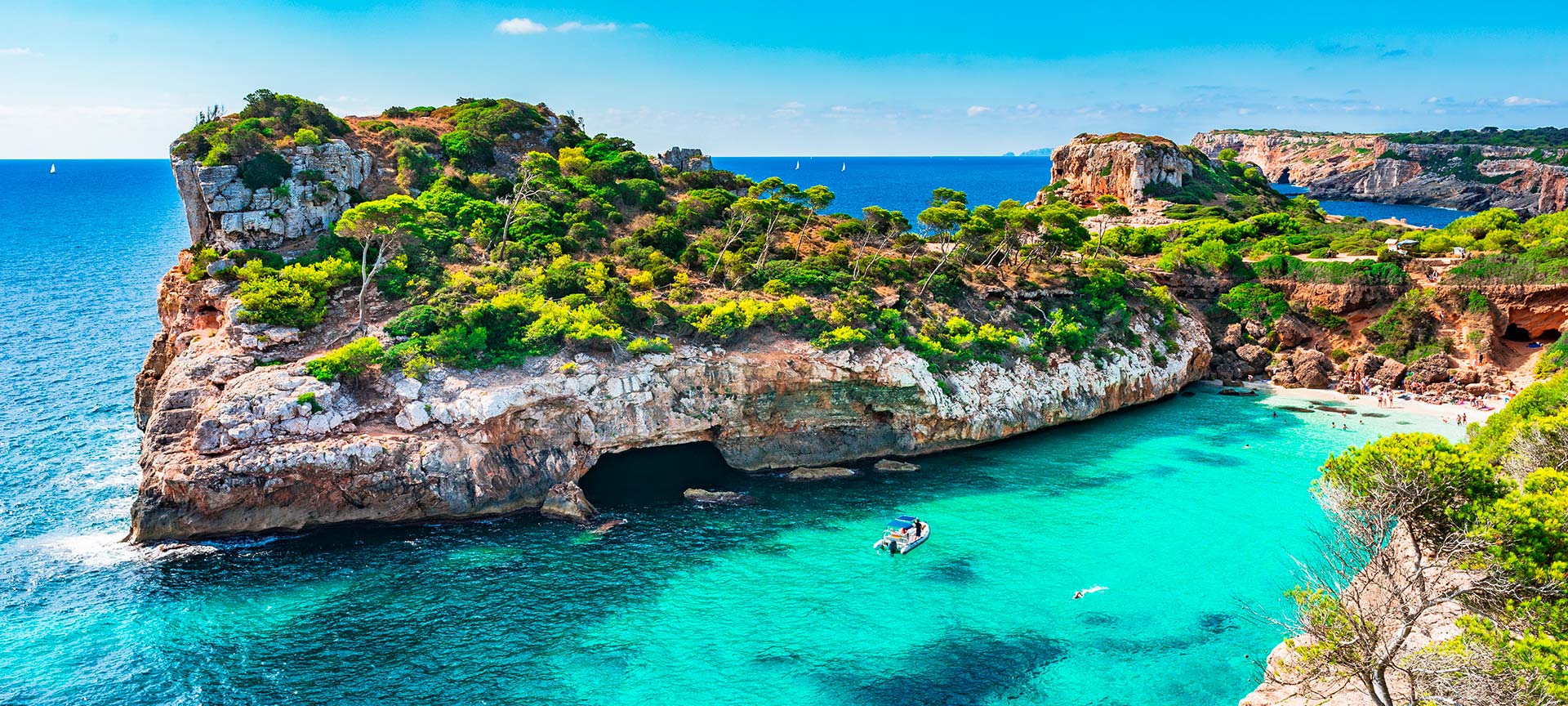
Some of the most beautiful and famous coves in Spain
Spain is a country surrounded by sea. Its 8,000 kilometers of coastline are synonymous with diversity and huge beaches, but also with secluded and beautiful coves. This report reflects only 10 examples of the variety and attractiveness of Spanish coves.
Debe activar Javascript para poder utilizar este servicio
-
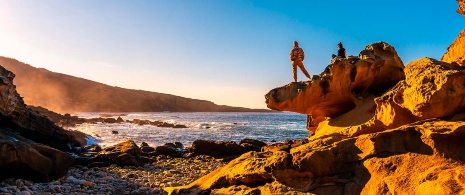
Basque Country / Euskadi: Cala de los Frailes (Hondarribia)
We start by the Cantabrian Sea, in the north, and next to the Higer lighthouse, the easternmost one on the Spanish Cantabrian coast. Between the lighthouse and the fishing port of Hondarribia, a Gipuzkoan town with a long seafaring tradition and a beautiful walled historic center, sits this small cove of stone and dark sand. It is relatively isolated, despite the proximity of the town, and is ideal for practicing naturism or scuba diving.
-
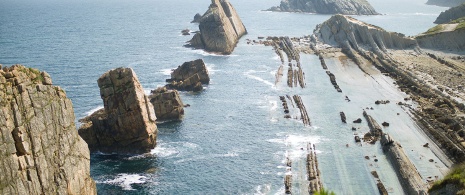
Cantabria: Arnía Cove (Piélagos)
Among the beautiful coves on the Cantabrian coast is La Arnía, just over 10 kilometers from Santander. Located in the heart of the Costa Quebrada Geopark, it has easy access, although the last section of descent must be done on foot. Among its main attractions is its golden sandy beach, from which you can observe the rock formations of its surroundings, with the unique natural wall and the striking Urros de Liencres islets.
-
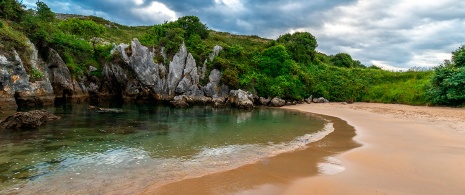
Asturias: Gulpiyuri Cove (Llanes)
The word cove directly evokes the sea. But the most incredible thing about Gulpiyuri cove in Llanes, Asturias is that you cannot see the Cantabrian Sea from it. It is reached along a farm road between meadows and, at first glance, it almost looks like a mountain lake. The secret of this unusual inland cove is that at high tide the water reaches here through underground cracks.
-
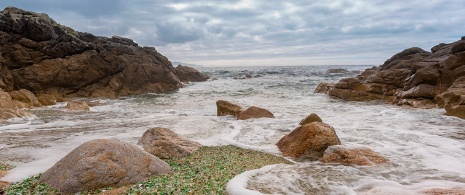
Galicia: O Castrillón (Laxe, A Coruña)
On the coast of Galicia, where the Cantabrian Sea meets the Atlantic Ocean, there is also no shortage of small, secluded beaches, such as O Castrillón cove. It is located on the famous Costa da Morte, one of the most emblematic tourist spots in the region. Very close is the small cove of Cristales or A Furna da Espuma, a sea inlet that fills up when there is a storm.
-
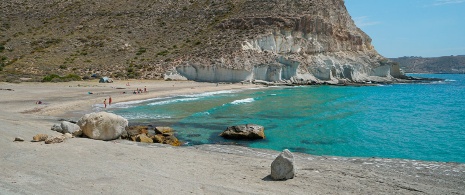
Andalusia: Cala de Enmedio (Agua Amarga, Almería)
Andalusia ranks second of all Spanish regions when it comes to the most kilometres of coastline. In the heart of the Mediterranean, located in Cabo de Gata-Níjar Natural Park, declared a Biosphere Reserve, Cala de Enmedio spans 150 metres of white sand and beautiful views of Agua Amarga. To access it you will have to walk for about 20 minutes or arrive by boat.
-
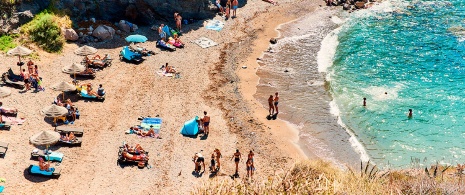
Murcia: Cala del Barco (Atamaría, Cartagena)
Among the beaches and coves that you can choose on the Mediterranean coast of Murcia, we present you a charming one with dark sand: Cala del Barco, which lies on the GR-92 hiking route (Mediterranean Hiking Route). To get to it you have to go down a mountain, although the road is passable by car. There you will find services such as rental of hammocks and umbrellas, showers and even a restaurant.
-
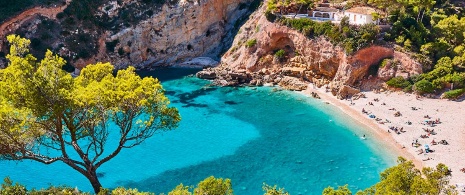
Region of Valencia: Granadella (Jávea, Alicante)
Cala de Granadella, in the Alicante city of Jávea, is home to rugged terrain, consisting of a small bay with a pebble beach. Beach umbrellas and hammocks are available for rent and its crystal clear waters make snorkeling a must. This cove is undoubtedly one of the stars of the Valencian Community coast. It can be reached by road, but it is advisable to get up early in high season because parking spaces fill up quickly.
-
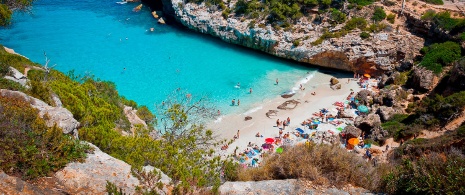
Balearic Islands: Caló d'es Moro (Santanyí, Mallorca)
The Balearic Islands could well be called 'the Islands of coves', as they are home to some of the most incredible coves in the western Mediterranean. Caló d'es Moro is a great example. It is an almost perfect natural rectangle, open on one side to the sea. Its colors: reddish and gray rocks, bright green trees, turquoise waters and golden sand. You park one kilometer away, but getting up early is highly recommended: it is very popular with tourists.
-
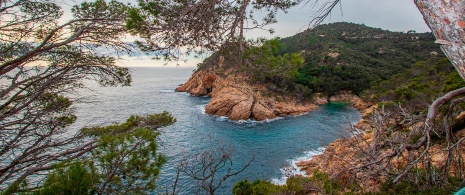
Catalonia: Cala Pola (Tossa del Mar, Girona)
In the northeast of Spain, and bathed by the Mediterranean, is the Costa Brava, which inspired Dalí and is also full of coves. One of the most notable is Pola Cove, a small sandy area where the numerous pine trees found in the area draw attention. With a semi-urban environment, it is located next to a campsite.
-
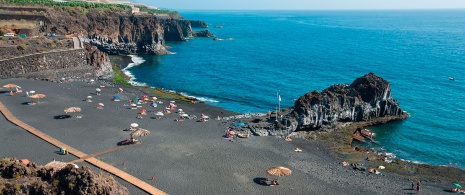
Canary Islands: Cala Charco Verde (Puerto Naos, La Palma)
In the middle of the Atlantic Ocean emerge the Canary Islands, a territory marked by its volcanic origin. Its large beaches are unforgettable, but there are also secluded ones with great charm. This is the case of Charco Verde cove, in southwestern La Palma, which, despite being nestled between cliffs and banana plantations, is easily accessible. Its calm waters and the services available, such as showers or a beach bar, make it perfect for spending a day with the family.















